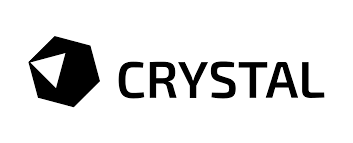CrystalLang-Blocks
 EngineersNation
EngineersNation
A block is the same thing as a method, but it does not belong to an object. Blocks are called closures in other programming languages. There are some important points about Blocks in crystal:
Block can accept arguments and returns a value.
Block does not have their own name.
Block consist of chunks of code.
A block is always invoked with a function or can say passed to a method call.
To call a block within a method with a value, yield statement is used.
Blocks can be called just like methods from inside the method that it is passed to
Inside the do..end statement Syntax:
# crystal program to demonstrate the block
# defined inside do..end statements
# here 'each' is the method name
# or block name
# n is the variable
["Geeks", "GFG", 55].each do |n|
puts n
end
output
Geeks
GFG
55
Inline between the curly braces {} Syntax:
# crystal program to demonstrate the block
# Inline between the curly braces {}
# here 'each' is the method name
# n is the variable
["Geeks", "GFG", 55].each {|i| puts i}
output
Geeks
GFG
55
Block Arguments: Arguments can be passed to block by enclosing between the pipes or vertical bars( | | ).
# crystal program to demonstrate the
# arguments passing to block
# here india_states is an array and
# it is the argument which is to
# be passed to block
india_states = ["Andhra Pradesh", "Assam", "Bihar", "Chhattisgarh",
"Goa", "Gujarat", "Haryana", "Arunachal Pradesh",
"Karnataka", "Manipur", "Punjab", "Uttar Pradesh",
"Uttarakhand"]
# passing argument to block
india_states.each do |india_states|
puts india_states
end
Output
Andhra Pradesh Assam Bihar Chhattisgarh Goa Gujarat Haryana Arunachal Pradesh Karnataka Manipur Punjab Uttar Pradesh Uttarakhand
Explanation: In above example, india_states is the argument which is passed to the block. Here it is similar to def method_name (india_states). The only difference is that method has a name but not block and arguments passed between brackets () to method but in block, arguments passed between pipes ||. How block return values: Actually block returns the value which are returned by the method on which it is called.
# crystal program to demonstrate how block returns the values
# here two methods called i.e 'select' and 'even?'
# even? method is called inside the block
puts [1, 2, 3, 4, 5].select { |num| num.even? }
Output
[2, 4]
Explanation: In above example, there are two methods i.e. select , even? and a block. At first, the select method will call the block for each number in the array. First, it will pass the 11 to block, and now inside the block, there is another method named even? which will take it as num variable and return false for 11. This false value will be passed to the select method which will discard it and then it will pass 12 to the block and similarly inside the block, odd? method is called which return true for the 12 and this true value will be passed to select method. Now select method will store this value. Similarly for remaining values in array select method will store the values in the array and at last final array will return to puts method which prints returned array elements on the screen.
The yield Statement
The yield statement is used to call a block inside the method using the yield keyword with a value.
# crystal program to demonstrate the yield statement
# method
def shivi
# statement of the method to be executed
puts "Inside Method!"
# using yield statement
yield
# statement of the method to be executed
puts "Again Inside Method!"
# using yield statement
yield
end
# block
shivi{puts "Inside Block!"}
Output
Inside Method!
Inside Block!
Again Inside Method!
Inside Block!
Explanation: In above program, method name is shivi. At first method statements is called which display Inside Method. But as soon as yield statements execute the control goes to block and block will execute its statements. As soon as the block will execute it gives control back to the method and the method will continue to execute from where yield statement called.
Note: Parameters can be passed to the yield statement.
# crystal program to demonstrate the yield statement
# method
def shivi
# statement of the method to be executed
puts "Inside Method!"
# using yield statement
# p1 is the parameter
yield "p1"
# statement of the method to be executed
puts "Again Inside Method!"
# using yield statement
# p2 is the parameter
yield "p2"
end
# block
shivi{ |para| puts "Inside Block #{para}"}
Output
Inside Method!
Inside Block p1
Again Inside Method!
Inside Block p2
BEGIN and END Block: crystal source file has a feature to declare the block of code which can run as the file is being loaded i.e the BEGIN block. After the complete execution of the program END block will execute. A program can contain more than 1 BEGIN and END block. BEGIN blocks will always execute in a order but END blocks will execute in reverse order.
# crystal program to demonstrate the use of
# same variable outside and inside a block
#!/usr/bin/crystal
# variable 'x' outside the block
x = "Outside the block"
# here x is inside the block
4.times do |x|
puts "Value Inside the block: #{x}"
end
puts "Value Outside the block: #{x}"
Output
Value Inside the block: 0
Value Inside the block: 1
Value Inside the block: 2
Value Inside the block: 3
Value Outside the block: Outside the block
ref:https://www.geeksforgeeks.org/ruby-blocks/
code is tested on:https://play.crystal-lang.org/
Subscribe to my newsletter
Read articles from EngineersNation directly inside your inbox. Subscribe to the newsletter, and don't miss out.
Written by
